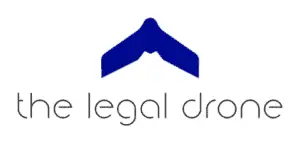I’ve got another Part 107 Test Prep Question of the Week. This one dives into some of the Part 107 regulations, so it might feel a little different than some of the other questions we’ve looked at because it requires a little less logic and a little more memorization of the regulations. This question deals with the requirements to fly drones after official sunset. Let’s take a look.
Flying Drones After Official Sunset
According to 14 CFR part 107, what is required to operate a small UA within 30 minutes after official sunset?
- Use of anti-collision lights.
- Must be operated in a rural area.
- Use of a transponder.
Logic is Your Friend
I know I said this one requires less logic, and it does, but lets try and apply a little logic anyway and see how far it gets us.
Starting at the last answer, it says the FAA requires the use of a transponder. For those of you that don’t know, a transponder is a device used in manned aviation that allows for the receipt of a radio signal and then transmits another signal. A lot of times when you are flying in controlled or congested airspace, a tower may ask you to “squawk” a specific transponder code so that they have the ability to see and recognize your aircraft out of a number of other aircraft. While this is super helpful in controlled or congested airspace, its really not going to help most manned pilots see your drone at night. Keep in mind that the FAA’s most basic job is to make sure that travel in the national airspace is safe. Does a transponder requirement for drones specifically at night best accomplish this goal? Probably not.
While transponders may become common fare when commercial drone flight beyond line of sight is common, it really isn’t yet and certainly isn’t required for night flight.
On first glance, the middle answer that night flight “must be operated in a rural area” seems like it would be a good answer. It logically makes sense to force drone night flights to areas where there will probably be less traffic. But when answering these questions, you are always looking to make sure you are choosing the answer that makes the most sense. This one might be a decent answer, but is it the best one? When we compare it to the first answer, probably not.
Moving up to the first answer then, requiring the “use of anti-collision lights” is the correct answer. Like I mentioned before, the FAA’s primary job is safety and the Part 107 regulations are written to encourage and increase safety. Adding anti-collision lights to a drone that is flying at night would obviously make the drone more visible, and thus, more safe. If manned aircraft can see and avoid drones entirely, the national airspace is more safe.
What do the Part 107 Regulations Say?
Now that we’ve gotten to the correct answer logically though, let’s read the Part 107 regulations to make sure. Obviously, you won’t be able to do this on the test, but that’s why you’re studying now. Here’s 14 CFR § 107.29(b), which states:
No person may operate a small unmanned aircraft system during periods of civil twilight unless the small unmanned aircraft has lighted anti-collision lighting visible for at least 3 statute miles. The remote pilot in command may reduce the intensity of the anti-collision lighting if he or she determines that, because of operating conditions, it would be in the interest of safety to do so.
So, the Part 107 regulations require a drone to have “anti collision lighting” that is “visible for at least 3 statute miles.” This used to require a solution where you would sort of rig up a wiring harness and lights on your drone, but thankfully, there are solutions that are a lot easier now. Lume Cube has come out with a fantastic strobe that meets this requirement and is visible for at least 3 miles.

